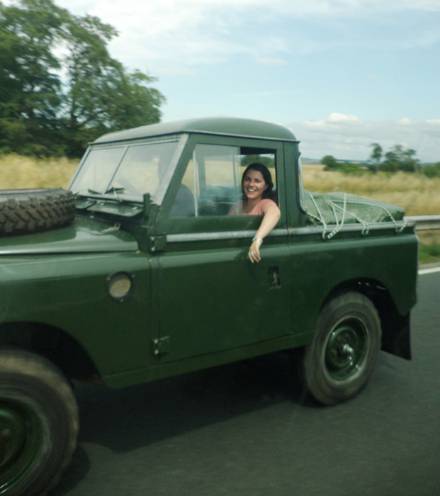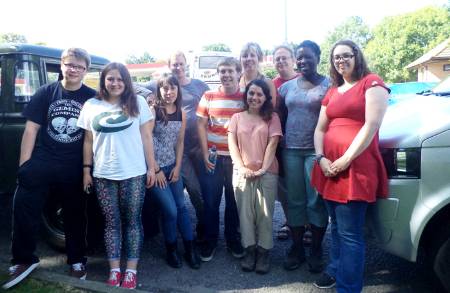A team of Museum scientists and volunteers are in Slapton Ley Nature Reserve this week to sample invertebrates from a variety of habitats. Volunteer Rachel Clark reports back on their first day and plans for the week ahead.
Day one - the road to Slapton
An early start was made by all ten of us today to arrive at the Museum nice and early. Before 10am it's still a place buzzing with activity as scientists work and front-of-house and retail staff prepare for some of the 4 million people who come through our doors into the Museum.
Soon enough we were leaving London behind and heading off for the sunny coasts of Devon and our field site.
All about Slapton Ley Nature Reserve
Slapton Ley Nature Reserve is in Devon, near Dartmouth in the South West of England. The reserve is an area of biodiversity importance as it is a designated SSSI (Site of Special Scientific Interest) with a rich coastal heritage. The lake in the nature reserve is separated from the sea by a thin band of land, with a lovely beach too!
With this in mind and the recent headlines during the winter, sampling places like Slapton Ley Nature Reserve is more important than ever as sooner rather than later the environment will be claimed by the sea.
A view of the Slapton Ley Nature Reserve to the right showing the size of the lake and the surrounding woodland and cliffs (some of which we will survey this week), and the gorgeous blue sea to the left.
Slapton Ley Nature Reserve has been studied well by scientists in certain areas such as bats and birds, but the invertebrates in the area are under-recorded. Jan Beccaloni found this out earlier in the year and believed it was time to do something about it!
Why and what we're sampling
We are sampling for collections enhancement and to provide species records to the Fields Studies Council (FSC). The habitats we will be sampling are a range of natural and semi-natural habitats, including woodland, cliffs, grassland, open water and banks.
The invertebrates we are collecting include:
- Arachnids (spiders and their relatives)
- Hymenoptera (ants, bees and wasps)
- Lepidoptera (butterflies and moths)
- Diptera (flies)
- Orthoptera (grasshoppers and crickets)
- Isopoda (woodlice)
- Myriapods (millipedes and centipedes)
Now the serious explaining is over, time for the fun of the adventure!
The long journey
First I must say a big thank you to Jan Beccaloni for driving us down to Slapton, Thomas our Hymenoptera specialist for driving down the bags and equipment in his amazing 40-year-old Land Rover, and last but not least Georgie for directing us.
Georgie navigating while enjoying a ride in a classic Land Rover.
I personally tried to use the time to catch up on some podcasts on my iPhone which are over a year old, including one on Alfred Russel Wallace and the Birds of Paradise... I fell asleep twice! It was a 8 hour drive, though we all had a brilliant laugh in the mini bus throughout the day and got to know each other.
The bright and breezy (at a petrol station!). Left to right: Beau, Fevziye (Fez), Sara, Thomas, Ryan, Jan, Georgie, George, Miranda and Rachel).
We passed one famous landmark, Stonehenge, very slowly which gave everyone a chance to take photos and we also passed some impressive fields with what looked to be hundreds of bales waiting to be taken into storage. We finally arrived in Slapton at our base camp of Start Bay FSC Centre at 19:00 (ish) hours with a lovely meal waiting for us ready prepared by the amazing staff at Slapton.
A busy Stonehenge on a sunny summers day, it wasn’t only busy there... it was busy on the road running past!
The mass of hay bales we encountered on our travels.
Some of us (myself included) were so eager to start collecting we set up a moth trap before heading off to bed. Well, that was the plan, some of us stayed up until gone past midnight looking at our catch. We plan to set it up tomorrow night and will write about it in a following post.
Hope you have enjoyed the excitement of our long journey! Bigger and better things to come!
Thank you for reading
Rachel







